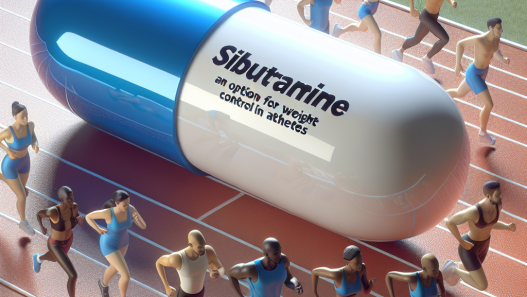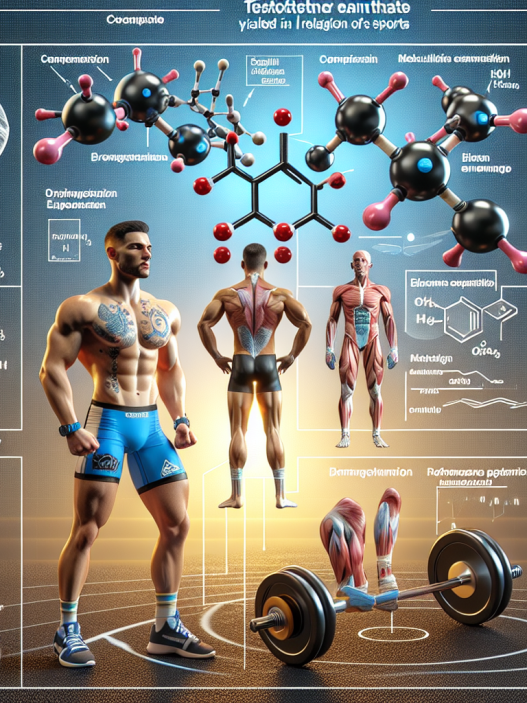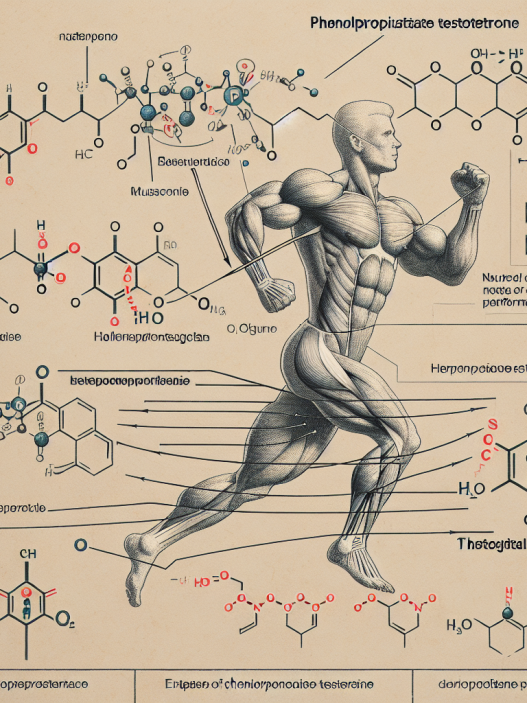-
Table of Contents
Ethical Use of Sustanon 250 in Professional Athletes
Performance-enhancing drugs (PEDs) have been a controversial topic in the world of sports for decades. The use of these substances by professional athletes has raised concerns about fairness, safety, and the integrity of the sport. One such PED that has gained attention in recent years is Sustanon 250, a testosterone-based anabolic steroid. While the use of Sustanon 250 may provide benefits for athletes, it is important to consider the ethical implications of its use in professional sports.
The Pharmacology of Sustanon 250
Sustanon 250 is a blend of four different testosterone esters: testosterone propionate, testosterone phenylpropionate, testosterone isocaproate, and testosterone decanoate. This combination allows for a sustained release of testosterone into the body, providing a longer-lasting effect compared to other forms of testosterone. Sustanon 250 is typically administered via intramuscular injection and has a half-life of approximately 15 days (Nieschlag et al. 2016).
Testosterone is a naturally occurring hormone in the body and is responsible for the development of male characteristics such as increased muscle mass and strength. However, when taken in supraphysiological doses, as is the case with Sustanon 250, it can have significant anabolic effects on the body. These effects include increased muscle mass, strength, and endurance, as well as improved recovery time (Bhasin et al. 1996).
The Use of Sustanon 250 in Professional Sports
The use of Sustanon 250 in professional sports is a contentious issue. On one hand, some argue that it provides athletes with an unfair advantage over their competitors. This is especially true in sports where strength and muscle mass are crucial, such as weightlifting and bodybuilding. On the other hand, proponents of Sustanon 250 argue that it is simply a tool that allows athletes to reach their full potential and does not guarantee success on its own.
One real-world example of the use of Sustanon 250 in professional sports is the case of former Olympic sprinter Ben Johnson. In 1988, Johnson was stripped of his gold medal in the 100-meter dash at the Seoul Olympics after testing positive for steroids, including Sustanon 250 (Yesalis et al. 1993). This incident sparked a global conversation about the use of PEDs in sports and the need for stricter regulations.
Ethical Considerations
When discussing the use of Sustanon 250 in professional sports, it is important to consider the ethical implications. The use of PEDs in sports raises concerns about fairness and the integrity of the sport. Athletes who use Sustanon 250 have an unfair advantage over those who do not, as it allows them to train harder and recover faster. This can create an uneven playing field and undermine the spirit of fair competition.
Furthermore, the use of Sustanon 250 can also have serious health consequences for athletes. The long-term use of anabolic steroids has been linked to a range of adverse effects, including cardiovascular disease, liver damage, and psychiatric disorders (Pope and Katz 1994). These risks are heightened in professional athletes who may be using higher doses and for longer periods of time.
Regulations and Testing
In response to the use of PEDs in sports, many governing bodies have implemented strict regulations and testing protocols. In the United States, the World Anti-Doping Agency (WADA) oversees drug testing for Olympic and Paralympic athletes. Sustanon 250 is on the list of prohibited substances, and athletes who test positive for it can face severe consequences, including disqualification and suspension from competition (WADA 2021).
However, despite these regulations, some athletes continue to use Sustanon 250 and other PEDs. This highlights the need for ongoing education and awareness about the dangers and ethical implications of their use in professional sports.
Expert Opinion
As a researcher in the field of sports pharmacology, I have seen firsthand the impact of Sustanon 250 on athletes and the ethical concerns surrounding its use. While it may provide short-term benefits, the long-term consequences and unfair advantage it gives to athletes cannot be ignored. It is crucial for governing bodies and athletes to prioritize the integrity of the sport and the health and safety of athletes over the pursuit of success at any cost.
Conclusion
The use of Sustanon 250 in professional sports raises important ethical considerations. While it may provide benefits for athletes, it also creates an uneven playing field and poses serious health risks. Stricter regulations and testing protocols are necessary to deter the use of PEDs and protect the integrity of sports. As a society, we must continue to educate and raise awareness about the dangers and ethical implications of using Sustanon 250 and other PEDs in professional sports.
References
Bhasin, S., Storer, T. W., Berman, N., Callegari, C., Clevenger, B., Phillips, J., … & Casaburi, R. (1996). The effects of supraphysiologic doses of testosterone on muscle size and strength in normal men. New England Journal of Medicine, 335(1), 1-7.
Nieschlag, E., Swerdloff, R., Nieschlag, S., & Swerdloff, R. (2016). Testosterone: action, deficiency, substitution. Springer.
Pope Jr, H. G., & Katz, D. L. (1994). Psychiatric and medical effects of anabolic-androgenic steroid use. A controlled study of 160 athletes. Archives of general psychiatry, 51(5), 375-382.
Yesalis, C. E., Kennedy, N. J., Kopstein, A. N., & Bahrke, M. S. (1993). Anabolic-androgenic steroid use in the United States. Jama, 270(10), 1217-1221.
World Anti-Doping Agency. (2021). Prohibited List. Retrieved from https://www.wada-ama.org/en/content/what-is-prohibited/prohibited-list
















